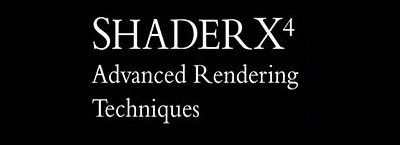|
News
Book
Cover
Book
Contents
About
the Authors
About the Editors
Errata
|
Dean Calver
Games are fun; I figured that out at age 2 and have spent the following
years working out how to make better games. For the last 5 years people
have even paid me to do it. Having no real preference for console or PC
has meant a mixed career flipping between them for every project.
Professionally I started on a war game, I then did 3 years of racing
game followed by an X-COM style game, then arcade classic updates,
currently doing a 3D graphic adventure.
I still study various subject including optics, mathematics and other
geeky things for fun. This incredibly stupid preoccupation with
learning means that I have been doing exams every year for over half my
life (which is really stupid given I work full time). At least I'll be
ready for to write the first game for a quantum computer.
Wolfgang Engel
Wolfgang is a Senior Graphics Programmer in the core
technology group at Rockstar San Diego. He is the editor of the ShaderX
book series and the author of Programming Vertex and Pixel Shaders.
Wolfgang is a frequent speaker on conferences world-wide and publishes
articles on several websites. He writes the X-Gen Column on the XGI
developer web-site.
Tom Forsyth
Tom Forsyth has been obsessed by 3D graphics since seeing Elite on his
ZX Spectrum. Since then he has always tried to make hardware beg for
mercy. Tom has written triangle-drawing routines on the Spectrum,
Sinclair QL, Atari ST, Sega 32X, Saturn, Dreamcast, PC, GamePark32 and
XBox, and he's getting quite good at them now. Tom's coding past
includes writing curved-surface stuff for Sega and graphics drivers for
3Dlabs. Currently he works in Guildford at Muckyfoot Productions, where
past projects are Urban Chaos, StarTopia and Blade II.
Eric Haines
Eric Haines, a graduate of the Cornell Program of Computer Graphics, is
currently a lead software engineer at Autodesk, Inc. He coauthored the
book Real-Time Rendering, now in its second edition. He is
also a member of the editorial board for the journal of graphics
tools, the archivist for the Graphics Gems repository,
and the webmaster for ACM Transactions on Graphics . He is
currently addicted to the game Battlefield 1942 . His
homepage is at http://www.erichaines.com
.
Kenneth Hurley
Kenneth has worked for notable game and technology
companies such as Electronic Arts and Intel, and most recently was a
senior engineer at NVIDIA Corporation. While there, he participated in
the XBOX hardware and numerous video games including Tiger Woods Golf.
Kenneth has been a consultant for several Silicon Valley companies and
worked with the United States government on the latest military
equipment, including the highly acclaimed Land Warrior. Kenneth’s
passion and experience for the gaming industry is what brings him
to the helm of Signature Devices. With over 20 years of experience,
this is Kenneth’s second start-up as an independent developer, giving
him perspective and a strong understanding of the demands of running an
up and coming development company. He has contributed to best selling
computer books on 3-D graphics and he is a requested speaker at
conventions and workshops around the country. Kenneth received his
Bachelor of Science degree in computer science from the University of
Maryland.
Sebastien St-Laurent
Sebastien St-Laurent holds a degree in Computer
Engineering from Sherbrooke University in Quebec (Canada) where he
graduated at top of his class in 1999. Since then, he worked on many
video game titles including: Space Invaders, Dave Mira Freestyle BMX,
Dave Mira Freestyle BMX2, Aggressive Inline, BMX XXX. Sebastien is now
currently employed with the Microsoft Corporation where he is a
graphics developer for the Microsoft Game Studios. Sebastien
St-Laurent is also a published author who has written "Shaders for Game
Programmers and Artists" and "The COMPLETE Effect and HLSL Guide".
Natalya Tatarchuk
Natalya is a Senior Software Engineer in the ATI Research, Inc. 3D
Application Research Group where she is investigating innovative
graphics techniques in the real-time domain for current and future
platforms as a contributor in the demo group. In the past she has been
the lead for the tools group at the 3D Application Research Group,
working on a pioneering real-time shader development environment
RenderMonkeyTM IDE. Natalya has been in the graphics industry for many
years, previously working on award-winning haptic 3D modeling software,
scientific visualization libraries and various other projects. She has
published articles in the ShaderX books, Game Programming Gems, Game
Developer magazine and Gamasutra.com, amongst others. She has presented
novel techniques at various conferences throughout the world, including
Siggraph sketches and presentations, GDC, GDC-Europe, Microsoft
Meltdown and Russian GDCs. Natalya graduated with BAs in Computers
Science and Mathematics from Boston University and is currently
pursuing an SM in Computer Science with concentration in Graphics at
Harvard University.
Matthias Wloka
Matthias Wloka is a software engineer in the technical developer
relations group at NVIDIA. His primary responsibility is to
collaborate with game developers to enhance image quality and graphics
performance of their games; he is also a regular contributor at game
developer conferences, such as GDC. Matthias's passion for
computer
gaming started at age 15 when discovering that his school's Commodore
PET 2001 computers also play Black Jack. He started writing his
own games soon thereafter and continues to use the latest graphics
hardware to explore the limits of interactive real-time
rendering. Before joining NVIDIA, Matthias was a game developer
at GameFX/THQ, Inc.
He received his M.Sc in computer science from Brown University in 1990,
and his B.Sc from Christian Albrechts University in Kiel, Germany in
1987.
|

